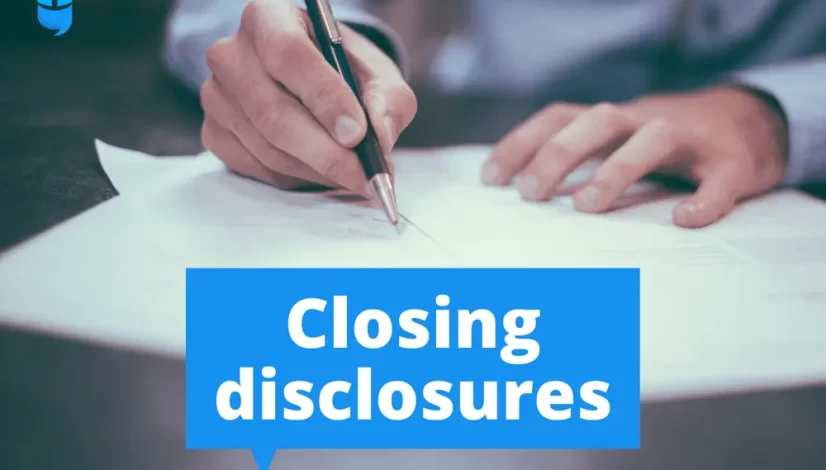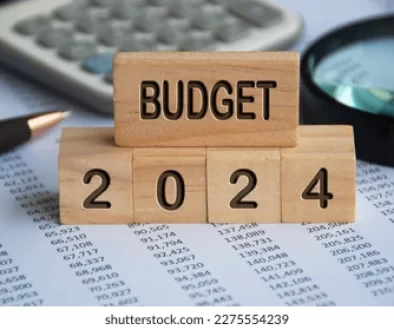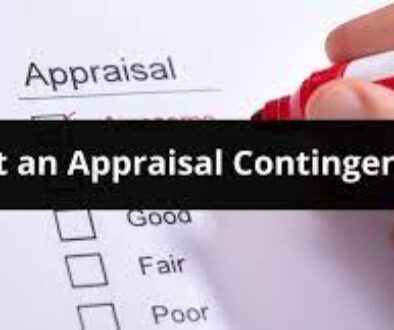Closing Disclosure
Closing Disclosure
Why Understanding Your Closing Disclosure Matters
If you’re purchasing a new home or refinancing your current loan, it’s imperative that you understand all the terms of your loan before you sign on the dotted line. The reason for this is that once you sign, you’re committing to the conditions presented.
That means it’s crucial that you carefully read the Closing Disclosure your lender sends you once you’re clear to close. As one of the final forms you receive before you close on your new loan, the Closing Disclosure allows you to compare your loan terms and costs to the terms listed in the Loan Estimate form you were given at the beginning of the process.
Like all mortgage forms, Closing Disclosures can be overwhelming to review, especially if you’re not sure what to look out for. Take the time to review everything the form covers so you’ll have no doubts when you’re asked to sign.
What Is The Closing Disclosure 3-Day Rule
Your lender is required by law to give you the standardised Closing Disclosure at least 3 business days before closing. This is what is known as the Closing Disclosure 3-day rule. This requirement is thanks to the TILA-RESPA Integrated Disclosure guidelines, which went into effect on October 3, 2015.
Prior to these rules, home buyers received two documents: the HUD-1 Settlement Statement and the Truth in Lending Disclosure Statement (instead of the Closing Disclosure). There were two problems with these previous documents: they were confusing, and they were only provided at closing – which offered home buyers very little opportunity to review and make sense of them.
The Closing Disclosure’s 3-day rule now gives you plenty of time to go over the final terms of your loan before you sign your closing documents.
How Does The 3-Day Rule Affect The Closing Disclosure Timeline?
Because of the 3-day rule, the sequence of events leading up to you receiving a Closing Disclosure should be relatively predictable. Lenders are generally careful to avoid issuing a Closing Disclosure before they are certain about what the closing costs and fees will be; they don’t want to have to change the agreement and wait another 3 business days.
This means that loan approval, home appraisal, insurance and the calculation of all third-party fees will be completed before the Closing Disclosure is issued to you. The timeline will therefore look like this:
- All costs are calculated.
- The Closing Disclosure form is issued.
- The 3-day rule goes into effect.
- You sign the form.
Closing Disclosure Form Basics
We’ve broken down each component of the Closing Disclosure below.
Loan Term
This section of the disclosure statement lays out the terms of your mortgage. It provides an accurate snapshot of how much you’ll pay and for how long. It’s broken down into five parts:
- Loan amount: This is the total amount you plan to borrow after you subtract the down payment and add any fees or costs rolled into your loan. If this amount has increased from your Loan Estimate and you aren’t sure why, ask your lender.
- Interest rate: The interest rate is the fee you pay for borrowing money. Your interest rate represents a percentage of the loan amount that you pay annually as interest for borrowing money, and it’s included in your monthly mortgage payments. Your interest rate shouldn’t change from what’s on your Loan Estimate if you’ve locked in your rate.
- Monthly principal and interest: Here, you’ll see the interest and principal you’ll pay. Note that if your monthly payment includes mortgage insurance or escrow payments, those will not be included here.
- Prepayment penalty: Some lenders charge a prepayment penalty fee when borrowers pay off their mortgage early. This doesn’t apply to any mortgage with The Lending Mamba.
Projected Payments
This section of the Closing Disclosure breaks down the major components of your mortgage loan and displays how the payments change over the years. It gives you the best picture of what you owe on a month-to-month and year-to-year basis.
- Payment calculation: Your mortgage loan consists of the principal and interest, mortgage insurance (if applicable) and the estimated escrow that’s used to pay you homeowners insurance and property taxes (if you have one). This section shows you what all of those payments will be during the terms of your mortgage. If your mortgage payment can change (for example, an adjustable-rate mortgage), there will be a calculation for what your maximum payment can be at each change based on interest rate caps.
- Estimated total monthly payment: This is the amount you’ll pay each month, including the principal, interest, mortgage insurance and escrow amount. An escrow account is used by your lender as a way to pay your property tax bills and homeowners insurance premiums.
Not all mortgages have an escrow account, but if you’ve chosen to have one, your estimated monthly payments will show up here. If anything in this section is vastly different from what was stated in the Loan Estimate, ask your lender why. It’s important to make sure that you can afford the estimated total monthly payments throughout the entire term of your mortgage.
- Estimated taxes, insurance and assessments You may choose not to escrow your taxes and insurance. If so, they’re laid out in this section of the document. Items not in escrow may include property taxes, homeowners insurance and homeowners association dues. Be sure you budget for these costs throughout the year.
Costs At Closing
Closing costs are broken down even further in this section of the document to give you a clear picture of what you’ll pay to your lender during closing. Closing costs will typically be about 3% – 6% of your loan amount.
Included at the bottom of the itemised costs, you’ll find the cash to close amount, which is the full amount of money you’ll need to have on hand at closing. The amount listed will be higher than the sum of your total closing costs because it includes your down payment amount.
Loan Costs
This portion of the Closing Disclosure is a comprehensive overview of the fees involved in getting your mortgage.
- Origination fee: Typically, this is anywhere from 0.5% – 1% of the loan amount. The origination fees cover all of the administrative costs associated with your mortgage application.
- Mortgage points: If you’ve chosen to buy mortgage points, it’ll be reflected here. Points reduce the interest rate on your loan. One point equals 1% of the loan amount. For example, one point will cost you $2,000 if your loan is $200,000. Mortgage points, along with the origination fee, are listed on the Closing Disclosure under Origination Charges.
- Application fee: The mortgage application fee covers the cost to process your application. The total amount varies by lender.
- Underwriting fee: When a lender underwrites your loan, they take a look at your full financial picture to determine how risky you’d be to lend to. The underwriting fee is included in the loan costs.
- Services borrower did not shop for: This is a list of required services that the lender chose. It can include an appraisal fee, credit report fee, flood determination fee, tax monitoring fee and tax status research fee. Check to be sure that these fees match the fees listed on your Loan Estimate. The costs should also be similar, though they might have changed slightly.
- Services borrower did shop for: These are the third-party services that you might have bargain-hunted on your own. They could include a pest inspection, survey and any title-related services (including title insurance, settlement agent and title search fees).
Other Costs
There are other costs that could be wrapped up in your mortgage, including taxes and government fees, prepaids, initial escrow payment at closing and more.
- Taxes and other government fees: You’ll see recording fees here, which are the fees for legally entering the new deed and mortgage into the public records. They include transfer taxes, which are paid when a property changes hands or when a mortgage loan is made. City, county and possibly state taxes are also included.
- Prepaids: This section will tell you how much money you need to put in escrow for certain prepaid costs, whether it’s a homeowners insurance premium, a mortgage insurance premium, prepaid interest or property taxes.
- Initial escrow payment at closing: Your initial escrow payment will include homeowners insurance, mortgage insurance and property taxes, and here, you’ll see the full amount you’ll need to pay at closing.
- Other: There may be other expenses you’ll need to pay at closing, including homeowners association fees, a home inspection fee, a home warranty fee, real estate commissions and title insurance.
At the end of this section, all other costs are added together, so you get a comprehensive overview.
Calculating Cash To Close
Cash to close reflects the full amount you need to bring to closing and includes any deposits you’ve already paid to the seller. It will also include how much money, if any, the seller is planning to pay toward your closing costs – known as seller concessions These are closing costs that you negotiate with the seller to pay.
Summaries Of Transactions
This section is a side-by-side view of the borrower’s and seller’s costs at closing. You’ll be able to see adjustments for any items that are paid by the seller in advance, including fees that the seller has already paid, such as taxes, homeowners association fees, and assessments. It also allows you to see what’s due from the seller at closing (such as payoff amounts of all mortgages, closing costs, seller credits and more).
At the bottom of this section, there is a full breakdown of the amount due from the seller and the amount due to the seller at closing. Additionally, it displays what you owe and what you’ve already paid prior to closing.
Loan Disclosures
The loan disclosure section will show more detailed information about the conditions of your loan. These disclosures include the following:
- Assumption: This section will tell you whether the loan is assumable, which simply means that the loan can be transferred to another person with little to no change in terms including the interest rate.
- Demand feature: Whether your loan includes a demand feature will be indicated here. If your loan does have a demand feature, the lender can require you to immediately pay the entire loan balance (principal and interest) at any time.
- Late payment: Making your payments on time is extremely important to remain in good standing with credit bureaus. However, it’s good to know in advance whether your loan imposes a late payment fee and when it will incur.
- Negative amortization: Negative amortization means that the loan does not fully mature. In other words, any interest payments not met throughout the term of the loan are added onto the original principal balance.
- Partial payments: Let’s say you can’t make a full mortgage payment during a particular month. This section will indicate whether the loan allows for partial payments. Depending on your loan’s conditions, your partial payment may be held in a separate account instead of being applied toward your loan, and you may also be charged a late fee until you make your full payment. It’s important to know what will happen if you cannot make a full payment.
- Security interest: A security interest simply means that if you stop making payments or don’t fulfill your mortgage agreement, the lender can take your home and sell it to pay off the loan.
- Escrow account: This part is a detailed overview that explains your escrow account (including whether you have one or not), the homeownership expenses included in the escrow account and how much you’ll be required to pay into escrow. If your Closing Disclosure doesn’t provide an escrow account overview, but you’d prefer to have your lender pay your property taxes and homeowners insurance every month, talk to your lender.
Loan Calculations
This section tells you how much your loan will cost you over the loan term. In other words, it’ll summarize all the payments you’ll make over the life of the loan, including finance charges, the amount financed and the annual percentage rate.
Other Disclosures
In this section, you’ll find general information about the appraisal (if applicable), contract details, refinance information and tax deductions. All of this is just general information, though it will indicate in your loan whether the laws in your state will specifically protect you from liability for the unpaid balance after forclosure.
Contact Information And Confirm Receipt
Finally, the last section includes the Contact Information and Signature lines. You’ll see the following: “By signing, you are only confirming that you have received this form. You do not have to accept this loan because you have signed or received this form.” In other words, signing the form does not require you to take the loan.
Loan Estimates And Closing Disclosures
The Loan Estimate is a three-page document you receive 3 business days after applying for a mortgage. It provides a summary of the loan terms, the costs associated with the mortgage, the loan size, interest rate and payments.
It lays out whether there are any balloon payments, prepayment penalties or more. The document also includes a schedule of your payments and the estimated taxes and insurance payments. Closing costs are outlined in the Loan Estimate as well.
The Closing Disclosure includes all the same information, but you can’t make any changes after you sign it. It’s important to compare your Closing Disclosure with your initial Loan Estimate to identify any discrepancies. If you notice any differences, including an increase in the mortgage interest rate or borrowing costs, you need to talk to your lender before you sign.
Discrepancies Between Your Closing Disclosure And Loan Estimate
If you find a discrepancy between the Loan Estimate and the Closing Disclosure that you don’t understand, the first step is to contact your lender or real estate agent immediately to verify if there are errors. These mistakes can be as minor as misspelt names or as serious as a change in the interest rate.
Alerting your lender to the errors may delay closely, but it’s vital to get any discrepancies cleared up before signing. If changes need to be made, you have 3 additional business days prior to closing to review the revised Closing Disclosure. Once they’ve been fixed, compare the Loan Estimate and Closing Disclosure again to ensure that they match up.
Closing Disclosure FAQs
To learn more about Closing Disclosures, review the following frequently asked questions:
Does receiving a Closing Disclosure mean the loan is approved?
The loan is approved prior to a lender issuing a Closing Disclosure. However, you’ll want to make sure your credit, income and debt are in check during this timeframe until the transaction is finalized.
Who gets a copy of the Closing Disclosure?
Typically, buyers and lenders will receive a copy of the Closing Disclosure. It’s recommended that buyers share a copy of their Closing Disclosure with their real estate agent to review before signing.
What happens after signing the Closing Disclosure?
After you sign the Closing Disclosure, you and your lender are not allowed to make any changes to the mortgage information.
Do I have to take on the loan after signing the Closing Disclosure?
No, signing the Closing Disclosure only signifies that you’ve reviewed the mortgage information sent by your lender. If you change your mind about purchasing a property after signing the Closing Disclosure, you can still opt out. It’s important to note that there are likely to be financial and credit consequences to backing out at the last second. With any loan, you’ll have to pay for things like application fees and the appraisal to compensate the lender for services already performed. If it’s a purchase, you’re very likely to lose your earnest money deposit.
There’s also a minor negative credit impact associated with applying for any loan on the logic that if you need a loan, it may be a sign that you’re not in great financial shape. Typically, this bounces back within a few months if you make on-time payments. However, in this case, you would be hurting your credit score without actually getting the benefit of the loan by backing out.
What happens if I don’t receive a Closing Disclosure?
Your mortgage lender is required to send you a Closing Disclosure. If you haven’t received the document, reach out to your lender immediately.




